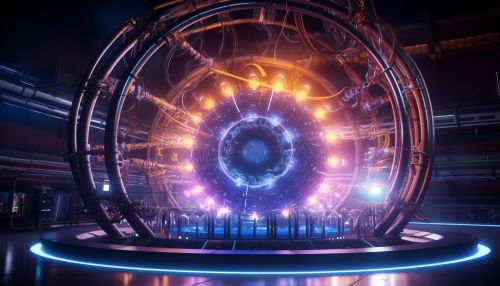Particle Physics
Introduction
Particle physics, also known as high-energy physics, is the branch of physics that studies the nature of the particles that constitute matter and radiation. It is the fundamental science that seeks to understand the universe's smallest building blocks and the forces that govern their behavior.
History
The history of particle physics can be traced back to the ancient Greeks' concept of the atom. However, the modern field began in the early 20th century with the discovery of the electron. This was followed by the discovery of the proton and neutron, which led to the development of the first particle accelerators in the 1930s.


Fundamental Particles
In the current understanding of particle physics, known as the Standard Model, there are 17 types of fundamental particles. These are divided into two groups: fermions, which make up matter, and bosons, which mediate the forces between particles.
Fermions
Fermions are divided into two families: quarks and leptons. There are six types of each, known as flavors. The quarks are up, down, charm, strange, top, and bottom. The leptons are the electron, muon, tau, electron neutrino, muon neutrino, and tau neutrino.
Bosons
Bosons are particles that carry forces. There are four types of bosons in the Standard Model: the photon, which carries the electromagnetic force; the W and Z bosons, which carry the weak nuclear force; and the gluon, which carries the strong nuclear force. The Higgs boson, discovered in 2012, is associated with the Higgs field, which gives other particles their mass.
Forces and Interactions
Particle physics studies four fundamental forces: gravity, electromagnetism, the strong nuclear force, and the weak nuclear force. Each of these forces is mediated by a different type of boson.
Gravity
Gravity is the weakest of the four forces and is not included in the Standard Model. It is described by General Relativity, but a quantum theory of gravity remains elusive.
Electromagnetism
Electromagnetism is the force that governs the behavior of charged particles. It is mediated by the photon and is described by Quantum Electrodynamics (QED).
Strong Nuclear Force
The strong nuclear force holds quarks together to form protons, neutrons, and other particles. It is mediated by gluons and is described by Quantum Chromodynamics (QCD).
Weak Nuclear Force
The weak nuclear force is responsible for certain types of radioactive decay. It is mediated by the W and Z bosons and is described by the electroweak theory, which unifies the weak force with electromagnetism.
Experimental Techniques
Particle physics experiments are conducted using particle accelerators, which accelerate particles to high energies and then collide them. The resulting particles are detected and analyzed to determine their properties and interactions.
Future Directions
Despite the success of the Standard Model, there are many unanswered questions in particle physics. These include the nature of dark matter and dark energy, the unification of the four forces, and the behavior of neutrinos. Future research in these areas will continue to push the boundaries of our understanding of the universe.
